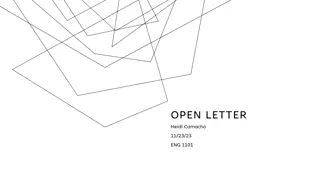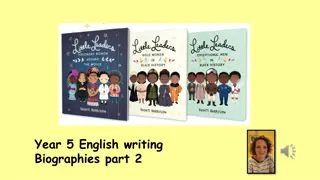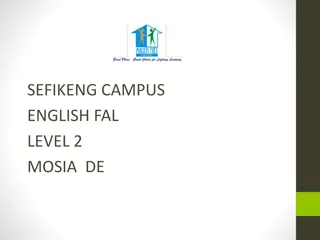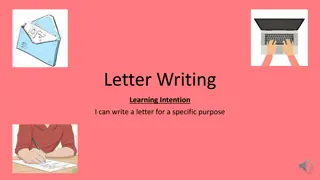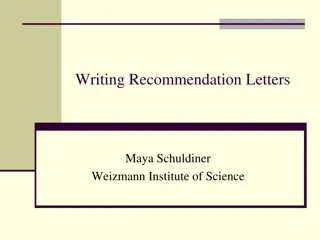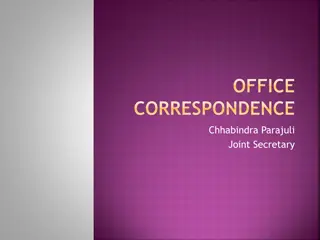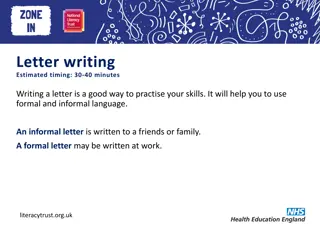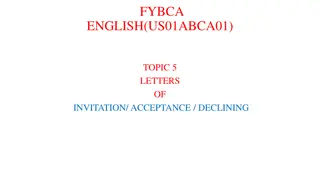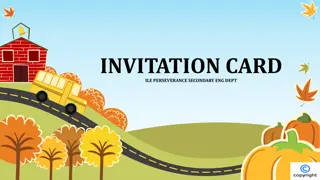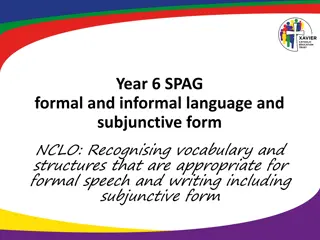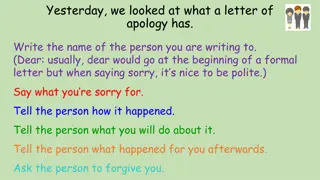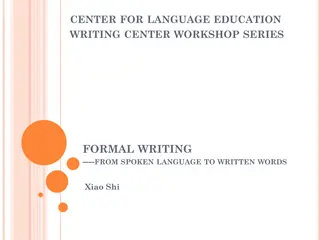Guidelines for Writing Effective Formal Letters
Learn about the types of formal letters, elements of a successful letter, paragraph planning tips, and the style to use in formal letters. Understand how to structure letters of complaint effectively, including the importance of clarity, justification, and clear presentation of complaints and suggestions. Enhance your formal letter writing skills with valuable insights and examples.
Download Presentation

Please find below an Image/Link to download the presentation.
The content on the website is provided AS IS for your information and personal use only. It may not be sold, licensed, or shared on other websites without obtaining consent from the author.If you encounter any issues during the download, it is possible that the publisher has removed the file from their server.
You are allowed to download the files provided on this website for personal or commercial use, subject to the condition that they are used lawfully. All files are the property of their respective owners.
The content on the website is provided AS IS for your information and personal use only. It may not be sold, licensed, or shared on other websites without obtaining consent from the author.
E N D
Presentation Transcript
Writing a formal letter Author: Sixten Hinnov
Types of formal letters Letters of request Letters giving information Letters of complaint Letters of apology Letters of application Letter of thank you
A successful letter should consist of: An appropriate greeting ( Dear Ms Crawley, Dear Mr and Mrs Jones, Dear Sir or Madam). An itroductory paragraph which clearly states your reason for writing. A main body in which you develop the subject, and deal with the additional objective(s) of the letter if necessary. An appropriate ending (Yours faithfully/sincerely + full name). You use faithfully if you do not know the name of the person you are writing to and sincerely if you know the name of the person you are writing to.
Paragraph Plan for Letters (120 words) Introduction Paragraph 1 (reasons for writing) Main body Paragraphs 2-3-4 (depends of the letter) Conclusion I look forward to your reply. Full name
Style in formal letters Formal greeting and ending. Formal language (complex sentences, non-colloquial language, frequent use of passive, and an advanced vocabulary). No abbreviated forms. Use linking devices (the last four slides!).
Letters of complaint (kaebekiri) A letter of complaint is written to complain about a problem which has arisen (e.g. Faulty merchandise, rude staff, inaccurate information, etc). It should explain the reasons for the complaint, and usually includes a suggestion/request/demand concerning what should be done (e.g. Refund, compensation, etc). The nature of the complaint should be clearly stated in the first paragraph. Each aspect of the topic should be presented in a separate paragraph containing a clear topic sentence. Each complaint should be supported by clear justification.
Paragraph plan Introduction Paragraph 1 (reasons for writing) Main body Paragraphs 2-3-4 (state complaint(s) with justification, suggest what should be done) Conclusion I look forward to your reply. Full name
Useful language for letters of complaint To begin letters: (Mild complaint) I am writing to complain about/draw your attention to (the problem of) . I am writing to express my disappointment/dissatisfaction with . I am writing to protest against . (Strong complaint) I am writing to express my annoyance/extreme dissatisfaction with/anger at/protest about . To end letters: (Mild complaint) I hope/trust this matter will be dealt with/resolved as soon as possible . I hope this matter will receive your immediate attention. I feel that you should . /I am entitled to compensation/a refund/a replacement. (Strong complaint) I must insist on ../demand /warn you that I will have no choice but to take further/legal action.
References Evans, V. 1998. Successful Writing Proficiency. EU: Express Publishing. (p 82-107) https://www.daydreameducation.co.uk/poster-formal- letter-en042 https://www.pinterest.com/explore/a-formal-letter/ https://www.pinterest.com/explore/transition-words- and-phrases/ https://www.pinterest.co.uk/pin/303852306090821838/







